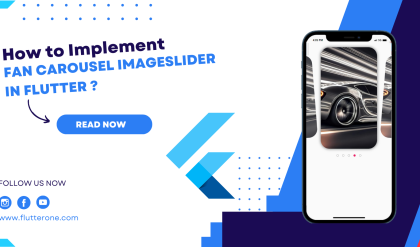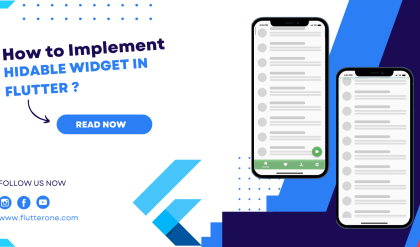When working with Flutter, understanding the essential widgets is crucial for building robust and interactive applications. Let’s explore the top ten Flutter widgets that can elevate your app development experience.
1. Container
The Container widget provides a rectangular visual layout, allowing you to customize its alignment, padding, margin, and background color. It serves as a versatile widget for structuring and styling UI elements.
Container(
alignment: Alignment.center,
padding: EdgeInsets.all(16.0),
margin: EdgeInsets.symmetric(vertical: 16.0),
color: Colors.blue,
child: Text('Hello, World!'),
)
2. Text
The Text widget displays read-only text on the screen. With support for various styling options like font size, color, alignment, and text decoration, it enables you to create visually appealing text elements within your app.
Text(
'Welcome to Flutter',
style: TextStyle(
fontSize: 20.0,
fontWeight: FontWeight.bold,
color: Colors.black,
),
)
3. ListView
The ListView widget is used to render a scrollable list of widgets. It is incredibly useful for displaying a large number of items efficiently, both vertically and horizontally.
ListView(
children: <Widget>[
ListTile(title: Text('Item 1')),
ListTile(title: Text('Item 2')),
ListTile(title: Text('Item 3')),
],
)
4. AppBar
The AppBar widget represents the top app bar that typically contains the app’s title and optional actions or navigation icons. It provides a consistent and customizable way to incorporate navigation and branding into your app.
AppBar(
title: Text('My App'),
actions: <Widget>[
IconButton(
icon: Icon(Icons.settings),
onPressed: () {
// Perform action
},
),
],
)
5. RaisedButton / ElevatedButton
The RaisedButton (now ElevatedButton in recent versions of Flutter) widget creates a button with a raised appearance that responds to user interactions. It can be customized with properties like text, color, shape, and an onPressed callback to handle button taps.
ElevatedButton(
onPressed: () {
// Perform action
},
child: Text('Click Me'),
)
6. TextField
The TextField widget allows users to input text. It displays an editable text field and provides options for handling user input, validation, and styling. You can customize its appearance and behavior to suit your specific requirements.
TextField(
decoration: InputDecoration(
labelText: 'Username',
hintText: 'Enter your username',
prefixIcon: Icon(Icons.person),
),
onChanged: (value) {
// Handle user input
},
)
7. Image
The Image widget is used to display images from local or remote sources. It supports various content modes, enabling you to fit, fill, or center the image within its container.
Image.network('https://example.com/image.jpg')
8. Card
The Card widget represents a material design card that displays related information. It provides a visually appealing way to present content with options to customize elevation, border, and content alignment.
Card(
elevation: 4.0,
child: ListTile(
leading: Icon(Icons.album),
title: Text('Album'),
subtitle: Text('Artist'),
),
)
9. SnackBar
The SnackBar widget displays a brief message at the bottom of the screen. It is commonly used to show informative or actionable feedback to users. SnackBars are useful for displaying alerts, notifications, or simple status messages.
Scaffold(
appBar: AppBar(title: Text('My App')),
body: Builder(
builder: (BuildContext context) {
return ElevatedButton(
onPressed: () {
ScaffoldMessenger.of(context).showSnackBar(
SnackBar(content: Text('This is a SnackBar')),
);
},
child: Text('Show SnackBar'),
);
},
),
)
10. BottomNavigationBar
The BottomNavigationBar widget is typically placed at the bottom of the screen and allows users to switch between different screens or views within the app. It provides navigation options with customizable icons and labels.
BottomNavigationBar(
items: [
BottomNavigationBarItem(icon: Icon(Icons.home), label: 'Home'),
BottomNavigationBarItem(icon: Icon(Icons.settings), label: 'Settings'),
],
currentIndex: _selectedIndex,
onTap: (index) {
setState(() {
_selectedIndex = index;
});
},
)
By leveraging these top ten Flutter widgets, you can create engaging and dynamic user interfaces, handle user input, and navigate through various screens within your Flutter applications.
Feel free to explore the extensive Flutter widget catalog to discover even more powerful widgets for building beautiful and feature-rich apps.






